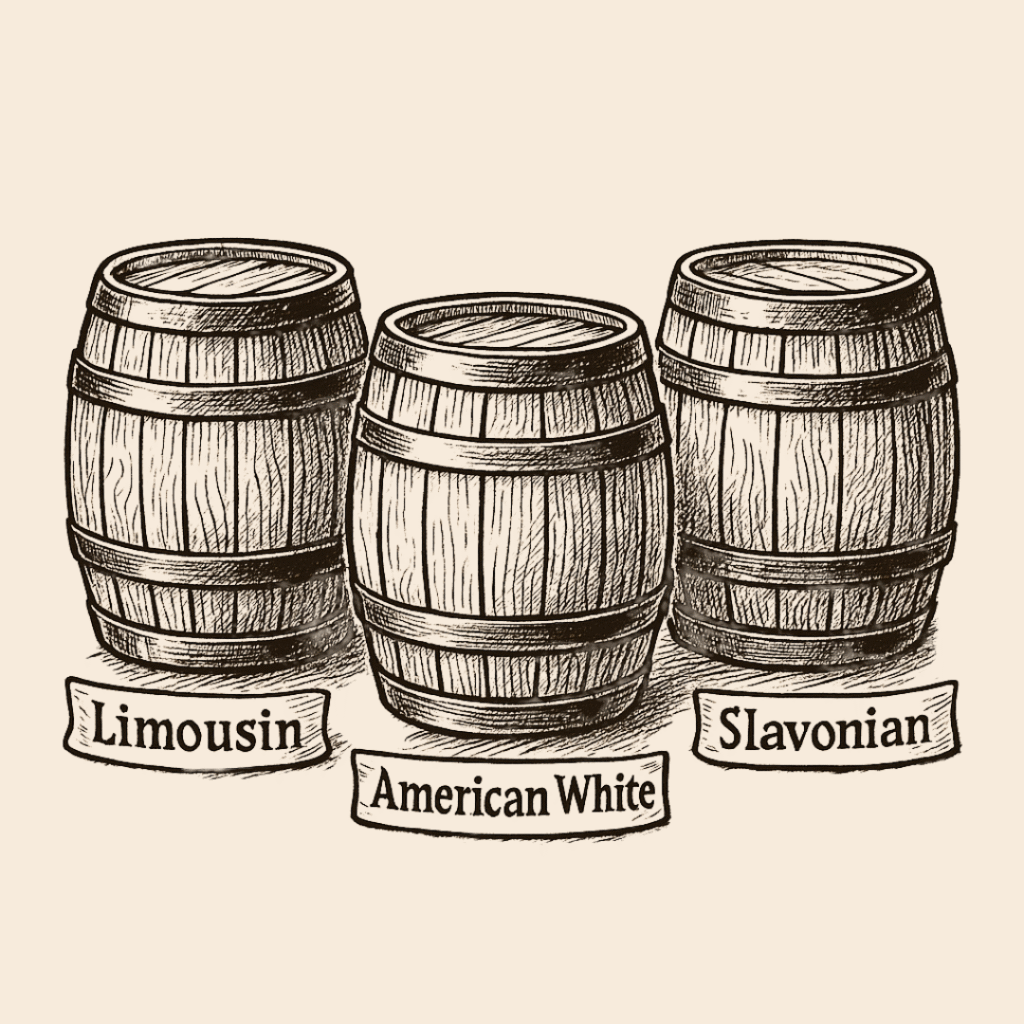Historically, winemakers have mainly used barrels made from three types of oak: French, American, and Eastern European (Slavonian) oak. Each type of wood gives the drink its own unique character and flavor profile.
1. French Oak
France is famous for its forests, but the oak used for wine barrels grows in only five of them: Limousin, Nevers, Vosges, Allier, and Tronçais. These forests were originally planted during the time of Napoleon. The wood is harvested carefully — after felling one mature tree, two or three young saplings are planted in its place to ensure sustainability.
In Limousin, the main species is pedunculate oak (Quercus robur), while in the other regions, sessile oak (Quercus petraea) dominates. Although Limousin oak belongs to the pedunculate family, it has a density and grain structure similar to American oak.
French oak barrels are more expensive than American ones, not only because of their quality but also due to the labor-intensive production process. In France, oak trees need about 150 years to mature, compared to around 90 years in the United States. Moreover, French coopers split the wood along the grain rather than sawing it, to obtain strong, watertight staves for barrels. As a result, a single French oak tree yields enough wood for only two barrels, while an American oak tree can produce material for up to four.
These factors make French barrels roughly twice as expensive as American ones. Nevertheless, winemakers continue to favor them for their ability to impart delicate notes of cinnamon and clove. Wines aged in French oak often also reveal hints of vanilla, chocolate, and tobacco, resulting in a refined and complex bouquet.
2. American White Oak (Quercus Alba)
American white oak contains fewer tannins than French or Eastern European oak but is rich in lactones — compounds that give spirits a distinct vanilla aroma and coconut-like flavor. This “vanilla sweetness” is one of the main reasons American oak barrels are so popular among whiskey producers, especially in the United States.
However, for wine, the influence of American oak can be too strong, often overpowering delicate grape aromas. For that reason, many American winemakers prefer to import French oak barrels for a more balanced aging process.
3. Slavonian Oak
Slavonian oak grows in parts of Eastern Europe, particularly in Croatia, Hungary, and Slovenia. Sometimes it is simply called Eastern European oak. In terms of structure, it is somewhat similar to French oak, but it doesn’t add the same subtle spiciness to wine.
Instead, Slavonian oak is prized for its strength and neutrality — it has a moderate tannin content and relatively low aromatic compounds. This makes it ideal for crafting large, durable barrels that can last for decades without overwhelming the wine’s natural flavor.
Drinks aged in Slavonian oak often gain elegant astringency, freshness, and brightness, while maintaining their authentic grape character. For this reason, many European winemakers use Slavonian oak for traditional long-term aging, especially for red wines that benefit from slow maturation in massive casks.

